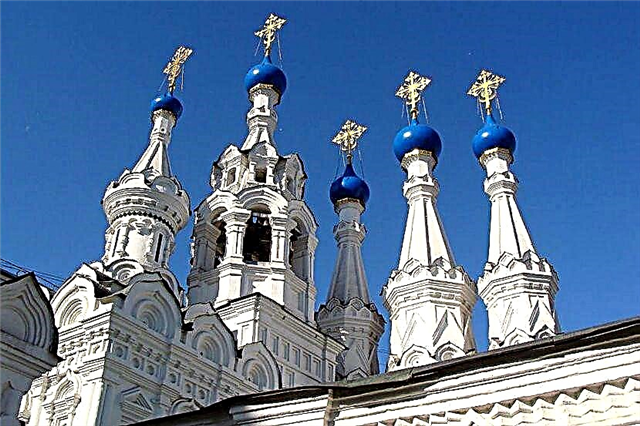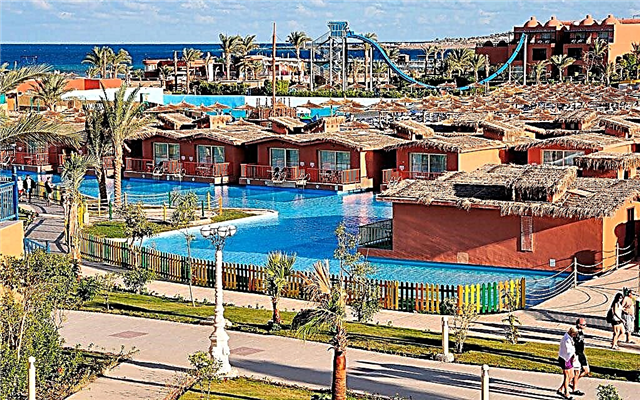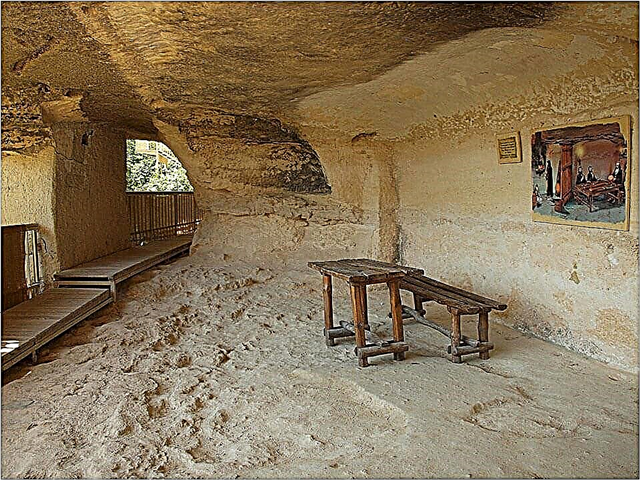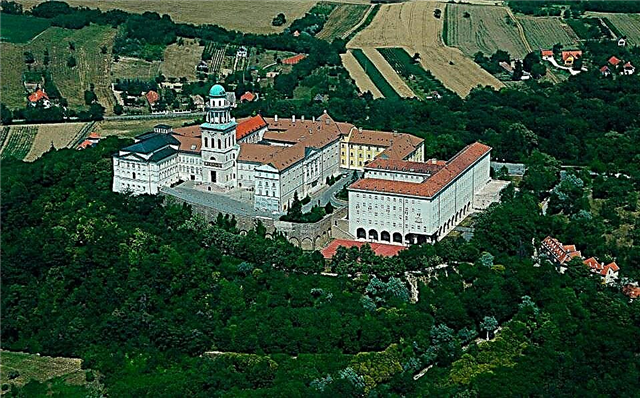Address: Russia, Moscow, st. Malaya Dmitrovka, 2, bldg. 2
Construction date: 1649 - 1652 years
Coordinates: 55 ° 46'01.0 "N 37 ° 36'24.8" E
Content:
In the historical center of the capital Of Russia a wonderful example of a bygone era of hipped roof architecture has been preserved. A year after the construction of the temple in Russia, a reform took place, and the builders were forbidden to build hipped roof churches. The magnificent Christmas temple is active. Believers come here to pray, and architecture lovers come here to admire the picturesque ornamentation.

How the temple was built
Several centuries ago, the area in which the church stands was a small outskirts of Moscow. In the 17th century it was called "Putinki". It was from here that the road to the distant northern lands began. Here was the Putevoy or Ambassadorial yard, where overseas ambassadors stayed.
Initially, there was a wooden temple in Putinki. According to some reports, it appeared in the XIV century. The plan of the city of the end of the 16th century, the so-called "Petrov's drawing", has been preserved. It depicts a two-headed wooden church.
In 1648, Moscow suffered from a great fire, and the old temple in Putinki burned to the ground. The parishioners really wanted to build a new church in stone. They were afraid of fires, because the fire deprived the victims of their homes and property. When Patriarch Paisiy of Jerusalem arrived in Moscow, he asked the Russian Tsar Alexei Mikhailovich to build a chapel in the new church in honor of the icon of the Mother of God "The Burning Bush" - the intercessor from the fires.

It is known that in 1649 the sovereign gave the priest Nikifor and the clerk Ivan the necessary materials and 300 rubles for the construction of a church in Moscow in honor of the Nativity of the Virgin and the Burning Bush. A huge sum for those times!
As usual in our country, there was not enough government money. Alexey Mikhailovich was not stingy and sent another 400 rubles. In the decree of the tsar it was written that a church with such a dedication was being built in Russia for the first time. After 3 years, it turned out that the money was again not enough, and the treasury allocated another 100 rubles.
In 1652, the construction was completed, an unusual stone temple in Putinki was consecrated. It cost the treasury an unimaginable amount of 800 rubles at that time. But the result exceeded all expectations!
The history of the temple in the XVIII-XIX centuries
The building was reconstructed in the 18th century. A side-altar was added to the temple refectory, which was consecrated in honor of the patron saint of fasting - Theodore Tiron. Another reconstruction took place before the visit to the church of the Russian Tsar Alexander II. In 1864, a closed porch with a small tent in the style of a temple was added to the west.

During the war with Napoleon in 1812, the Nativity Church was lucky. Unlike other churches in the city, it was not damaged in a fire that burned down half of Moscow. During the war with the French, services were interrupted for only two weeks. Since the opening, the composition of the clergy has not changed. The abbot, deacon and sexton served in the church.
After the revolution, the church in Putinki was not closed immediately. In the mid-1930s, an active campaign against religion began in the country, and the ancient Vysoko-Petrovsky monastery was liquidated. When this happened, Vladyka Bartholomew (Remov) with the entire community of monks and novices moved to the Nativity Church. In 1938, the new authorities ensured that believers were no longer allowed into this church.
By a lucky coincidence, the old building was not destroyed, but it remained empty and decayed year after year. The interior decoration has been lost. For a long time, the premises housed a rehearsal base for the Moscow Circus Directorate. Inside the former church, monkeys and dogs were trained.

By the end of the 1950s, the state of the Nativity Church was already in critical condition. So that a wonderful example of Russian architecture does not disappear, a team of craftsmen under the leadership of the architect Nikolai Nikolaevich Sveshnikov carried out a major restoration. Sveshnikov carefully examined the building from the base to the domes and described in detail all stages of construction.
Thanks to the excellent scientific restoration, the architectural monument was not damaged, and they managed to return it to its original appearance. The only change that the restorers made was that the closed porch from the west was made open. After the restoration, it began to resemble the Russian chambers of the 17th century.
Believers were able to return the shrine only in 1990. The old Moscow church received the status of the Patriarchal Compound, and in 1991 church services were resumed in it.
Over the decades of desolation, nothing remained in the church, so the abbot, parishioners and volunteers had to restore the interior decoration almost from scratch. The famous theater and film actor Alexander Abdulov provided great assistance in the restoration. In 2008, when Abdulov was gone, his funeral service was held under the arches of the church.

Architectural features
The Church of the Nativity of the Blessed Virgin Mary is the last in Moscow, where the old architectural style is used. It appeared just a year before Patriarch Nikon forbade the building of tent-roofed churches in Russia. After the church reform, only churches with onion domes were erected in the cities and villages of our country.
The basis of the temple is a squat one-story quadrangle, which is adjoined by two side-chapels. The quadruple is built non-trivially, It stretches not from west to east, but from north to south. Six faceted tents grow out of the main volume like mushrooms. The picturesque finish forms a complex composition that resembles the famous St. Basil's Cathedral.
The bell tower was erected not from the west, like other Russian churches, but from the north-east. It rises next to the three tents of the main body, which stand in a row. Another unusual architectural solution is that the tents are not open inward, as was the case before. They are erected on top of the vaults and play a purely decorative role.

The facades of the building are decorated with intricate Russian ornamentation. This is the name of the decorative design of walls using curly bricks. The architectural technique was first used in Yaroslavl, and from there ornamental patterns spread throughout Russia. It is curious that the Nativity Church has no main and secondary facades. Whichever side you look at the building, it has an impeccable rich decor.
Everyone who sees the old church is fascinated by the beauty of small details - zakomars, friezes, arcatures and rows of large and small kokoshniks that surround the bases of drums and tents. The precision and accuracy of stone patterns makes you admire the high level of skill of medieval architects. Snow-white domes are in perfect harmony with small azure domes and bright golden crosses.
Interiors and shrines
Three side-chapels have been consecrated in the temple, and its walls are decorated with beautiful ornaments. Unfortunately, the old decoration of the church has not survived. Inside there are icons of modern masters, which were painted after the church was handed over to believers. Many of the icons were donated to the church by parishioners.

One of the shrines of the Nativity Church is a rare in Russia icon of the Great Martyr Theodore Tiron. The Christian saint lived at the turn of the 3rd-4th centuries in the city of Amasia, in Asia Minor. He was a warrior, did not obey the order of his commander and refused to offer sacrifices to the pagan gods. Theodore Tyrone had to go through prison, hunger and inhuman torture, but he continued to profess the Christian faith. In 306, the unbroken warrior was burned at the stake.
Useful information for pilgrims and tourists
The doors of the temple are open any day from 8:00 to 20:00. Services are held daily: on weekdays at 7:30, and on Sundays at 9:00 and 18:00. There is a children's charity fund at the church.
Near the church fence, on Malaya Dmitrovka street, a kiosk “Monastyrskaya bakery” is open. There you can always buy fresh bread, flavored rolls, cookies, cakes and rolls.

How to get there
One of the most beautiful cathedrals and temples in Moscow stands near the turn of Strastnoy Boulevard to Malaya Dmitrovka Street. It is easy to walk here from Tverskaya metro stations. "Pushkinskaya" and "Chekhovskaya". From the Rossiya theater turn onto Malaya Dmitrovka, and after 100 m you are at your goal.











